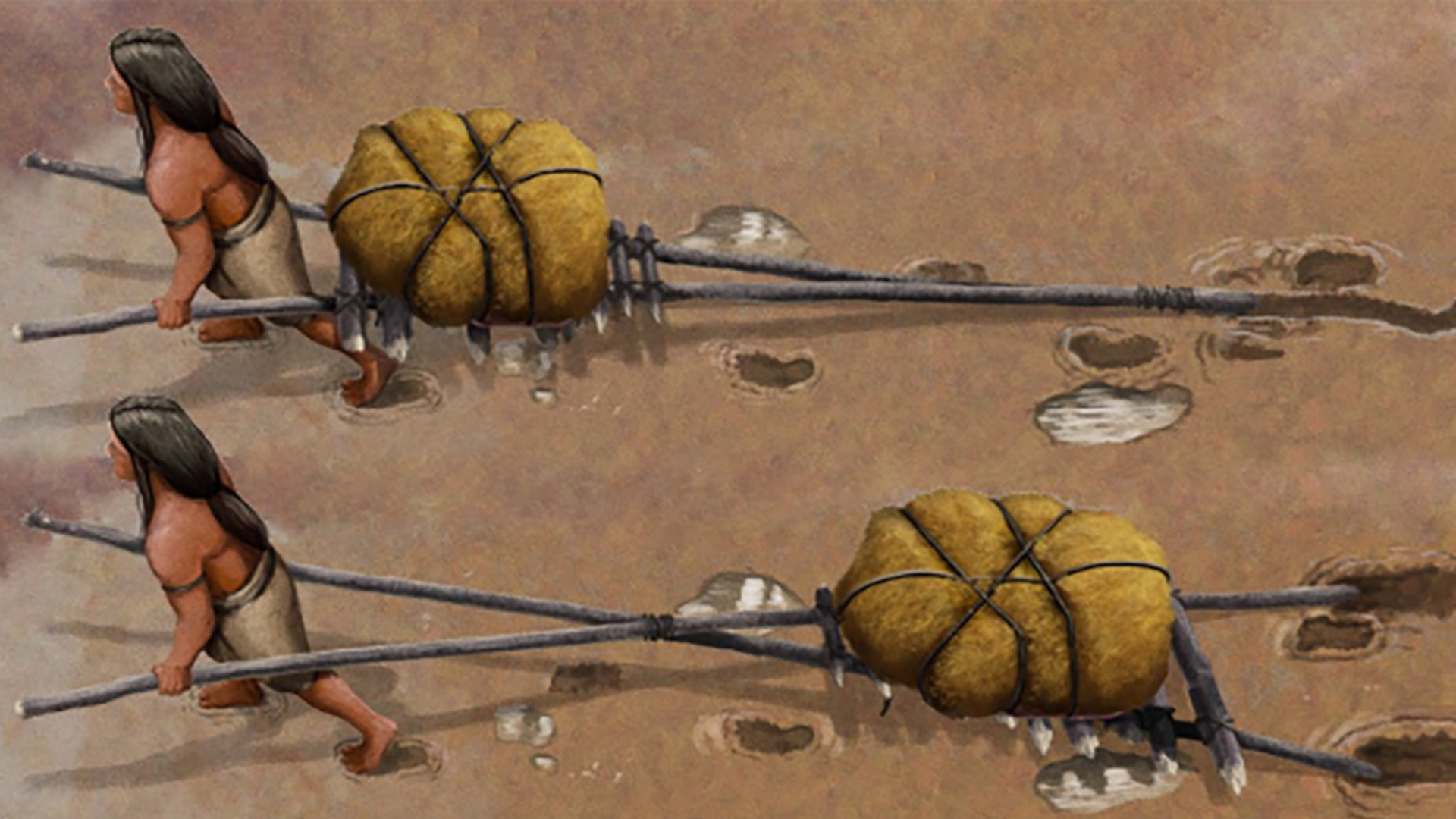Featured
- Get link
- X
- Other Apps
Ancient "Vehicles" Traced Back 20,000 Years Found in New Mexico

The earliest known North Americans used wooden "vehicles" to transport goods, and possibly even people, more than 20,000 years ago, a new study suggests.
Scientists found evidence of sled-like drag marks next to ancient footprints at White Sands National Park in New Mexico, which could be oldest human footprint site in North America.
The indigenous participants involved in the research indicated that the markings were created using a travois, which consists of a wooden structure formed by two poles tied together, as stated in the study released in the January issue of the journal. Quaternary Science Advances .
The Indigenous peoples from the Great Plains region, which encompasses parts of present-day New Mexico, utilized travois dragged by dogs—and subsequently by horses—to carry their dwellings, furnishings, and various belongings during initial encounters with European settlers approximately five centuries back. According to research findings, kids and elderly females were among those who traveled using these devices. The investigators noted that based on the dimensions and placement of old footprints discovered alongside scrape marks, adult members probably hauled the travois, trailed closely by younger individuals.
"A lot of individuals are acquainted with guiding a shopping cart through a grocery store, shifting sections while youngsters cling onto them," according to the study’s lead author. Matthew Bennett , a professor of environmental and geographical sciences at Bournemouth University in the U.K., said in a statement This seems to be the early version, though lacking wheels.
Related: The 1st Americans were not who we thought they were
Bennett pointed out that researchers understand our ancestors had to use some method for transporting their belongings during migrations across the globe, yet these wooden devices have long since decomposed. The newly found drag marks offer the initial evidence of how early humans shifted bulky items. before wheels , he said.
In 2020, researchers commenced excavation at the location of the drag marks. Within White Sands, trackways are embedded in ancient hardened mud that lies underneath layers of sediment. Countless years back, humans walked through this area. trudged through this landscape alongside mammoths, giant ground sloths, camels and many other ice age creatures.
The drag marks comprise lines in the soil stretching over 165 feet (50 meters) upwards. These markings included some singular lines, potentially created by two poles tied together at one end forming an A-shape. Additionally, there were instances where two separate parallel lines appeared, presumably resulting from two poles intersecting in the center to form an X-shape, as stated in the report.
The indigenous inhabitants of the Great Plains commonly employed an A-frame structure consisting of wooden beams connected by crossbars or woven nets designed to secure items, as indicated by the research. Investigators hypothesized that early settlers in this area utilized similar contraptions. To validate their hypothesis, they crafted travois from wood poles and pulled these constructions across muddy flats in the UK and coastal areas of Maine for testing purposes.
"In our experiments, our footprints and lines in the mud from the poles had the same appearance as the fossilised examples that we found in New Mexico," Bennett said.
Bennett and his colleagues previously dated the human footprints at White Sands to around 21,000 to 23,000 years ago — challenging the previous assumption that humans arrived in North America 13,000 to 16,000 years ago. Not all researchers agree on the site's age, but the study authors noted that any dating debate shouldn't distract from these newly identified features demonstrating ancient Indigenous practices, whatever their age.
Each finding we reveal at White Sands enhances our knowledge about the earliest inhabitants who settled in the Americas," states the co-author of the recent study. Sally Reynolds , a mammalian paleontologist at Bournemouth University, said in the statement. "These people were the first migrants to travel to North America and understanding more about how they moved around is vital to being able to tell their story."
- Get link
- X
- Other Apps
Popular Posts
ABC Apologizes After Claudia Long Fabricates False Claims About Two High-Profile Politicians
- Get link
- X
- Other Apps
Tokyo Stocks Dip as Wall Street Suffers Losses
- Get link
- X
- Other Apps
Comments
Post a Comment